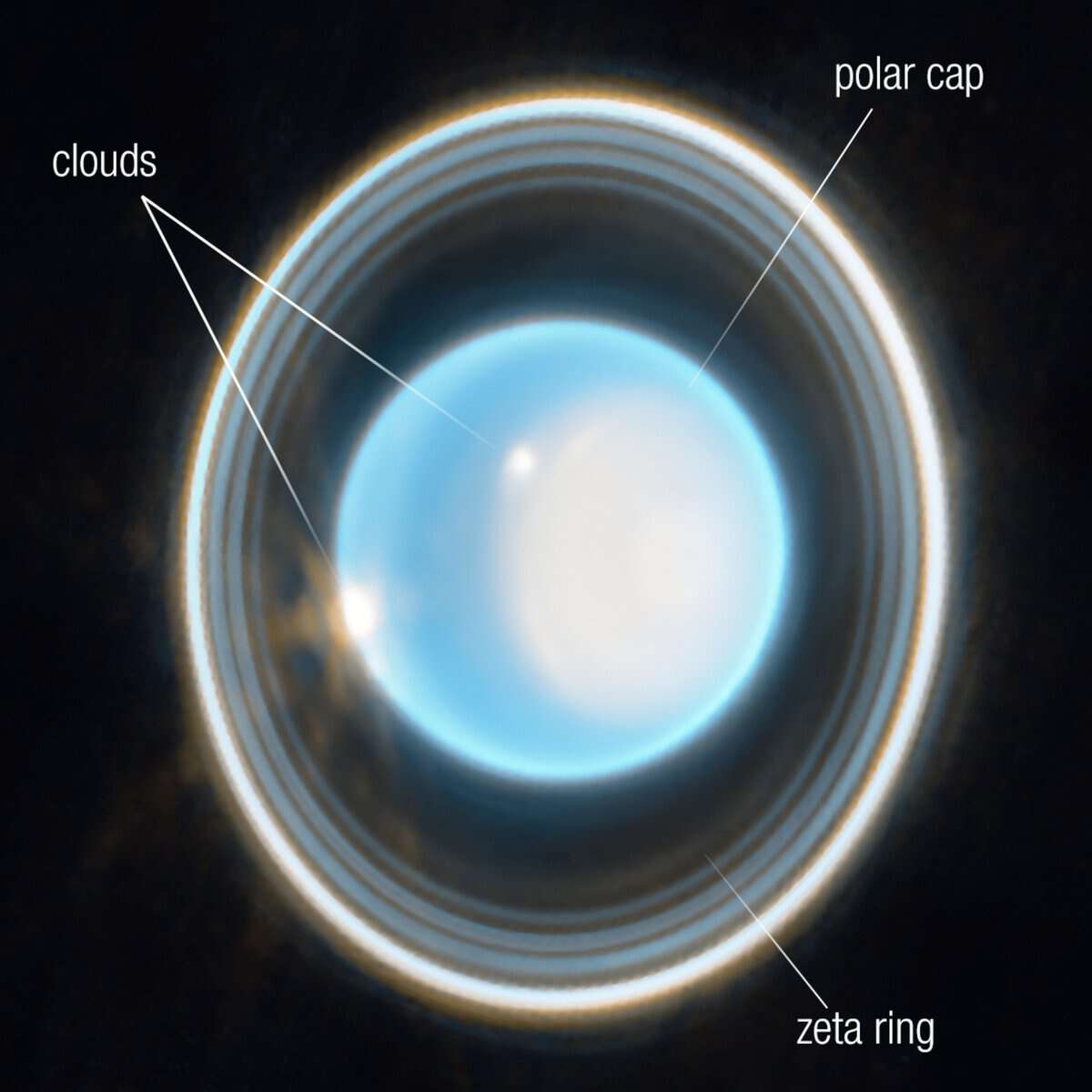The presence of ring systems is not limited to the solar system; Uranus also has its own set of rings. These rings can be observed through a telescope, although they may not be as visually stunning as the rings of Saturn.

The discovery of the Uranus ring system was made on March 10, 1977, placing it in a unique position between Saturn’s expansive rings and the more simplistic ones found around Jupiter and Neptune. This credit goes to spacegid.
Observational history
Uranus was first observed in the late 18th century, but its 9 rings were not discovered until 1977 by a group of American astronomers using the Copair Airborne Observatory.
Even though the English astronomer W. Herschel, who first discovered the planet, had previously speculated about the existence of a ring system around Uranus and provided detailed descriptions of the objects, mentioning that at least one of them appeared red in color.
The accidental discovery of the 20th century occurred when scientists were studying the Uranian atmosphere and observed the planet passing in front of the star SAO158687 in the constellation Libra, partially blocking its light.
It was observed that the star experienced a decrease in its luminosity before it began to enclose the planetary disk. Subsequently, it would periodically become brighter and then dim again. This led to the conclusion that there were stable objects orbiting the planet, which were later observed by astronomers through telescopes. Following the discovery of Saturn’s ring system, this was the second ring system to be identified in our solar system.
The existence of these objects was confirmed in 1986 by the Voyager 2 interplanetary spacecraft, which discovered two additional elements of the ring system.
The spacecraft conducted a comprehensive investigation into the physical properties of these celestial bodies, observing them from various positions relative to Uranus and the Sun. They were photographed under direct and diffused light conditions.
In 2005, the Hubble Space Observatory detected two additional rings around Uranus. These rings were difficult to spot earlier because they are located twice as far from Uranus as previously discovered objects.
Furthermore, the Hubble Space Observatory also made the discovery of Uranus’ natural moon, Mab, whose orbit aligns with the outer ring’s shape.
In 2006, the Keck Observatory telescope in Hawaii captured images of the Uranian system in its true colors. The rings appeared mostly gray, except for the red Nu ring and the blue Mu ring. The blue hue of the Mu ring is attributed to the presence of a significant amount of water ice mixed with rock dust.
At certain times, such as during certain years, the Earth crosses the plane of the Uranian ring system, resulting in a flat appearance of the rings from our perspective.
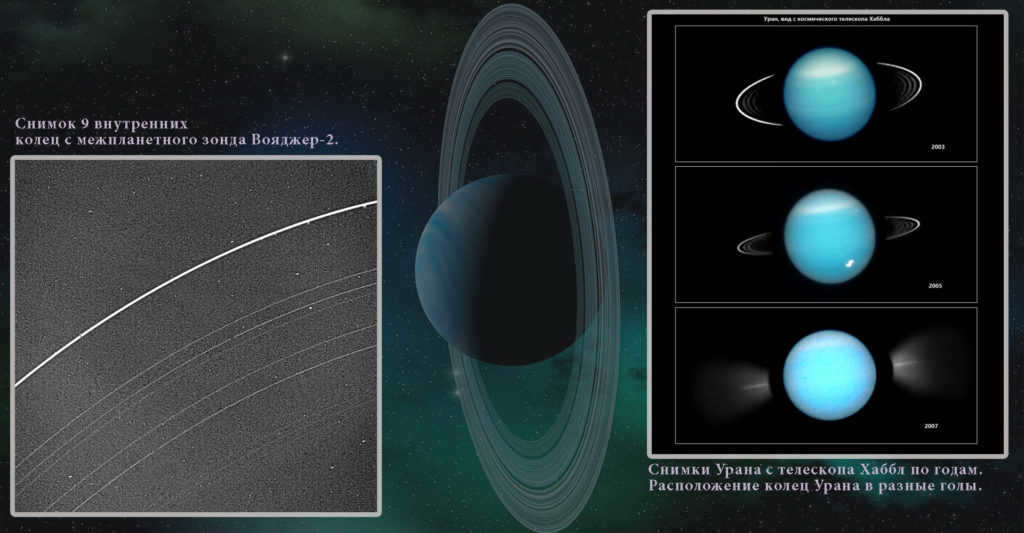
The existence of the nine rings of Uranus was initially established through observations made from Earth. However, it was the Voyager 2 probe that unveiled a surprising discovery – a tenth ring that measures 3 kilometers in width, along with several other incomplete rings displaying a dark color. These rings are comprised of particles with an average diameter of approximately one meter. The credit for capturing a photo of these rings goes to the spacegid and the image was taken using the Voyager 2 and Hubble telescope.
Description and features
Uranus is characterized by the presence of 13 rings that are positioned at various distances from the planet’s surface. The first ring, known as Zeta or object 1986U2R, begins at a distance of 38,000 km, while the last ring, called Myu or R2003U1, is located at an altitude of 98,000 km. It is possible that there are additional dust bands and incomplete arcs in these ring formations.
Unlike the rings of Saturn, Uranus’ rings are narrow, dark, and have a reflectivity of only 2%. They are not made up of cosmic dust, but rather consist of large fragments that can reach up to 20 m in size.
The age of Uranus’ rings is estimated to be less than 600 million years, making them younger than the planet itself. It is believed that these rings may have formed through the collapse of one or more natural moons due to collisions or tidal forces. The process of their formation would have taken anywhere from 100 to 1000 years.
There is a widely held belief among scientists that the ring system of Uranus serves to keep the smaller satellites in close proximity to the central planet. Without this mechanism, the satellites would likely drift out of orbit and into the void of space.
There exists an enigmatic self-contained process within the system that prevents the gradual erosion of its boundaries. This process is vital for the continued existence of the objects within the system, as without it, they would not persist for more than one million years.
Evidence has shown that the matter within the rings is constantly being replenished with new elements. This applies to both the dust bands and the larger objects within the system.
The rings themselves can be classified into three groups: nine narrow rings, two dusty rings, and two outer rings.

The majority of the rings encircling Uranus are not transparent and have a width of just a few kilometers. This collection of rings contains minimal amounts of dust and is composed primarily of substantial objects measuring between 0.2 and 20 meters in diameter. Credit: mirkosmosa.ru.
This group of rings is the largest, consisting of 9 pieces. They are primarily composed of dark stone dust and debris, with an unknown chemical composition.
Epsilon is the brightest and densest element. It has an elongated shape, resulting in varying brightness in different areas. Its width ranges from 20 to 96 km.
The average thickness of Epsilon is 150 m, and it has a multilayered structure. Some of the rings may not be fully closed. The particles present in this group range in size from 20 cm to 20 meters. The total mass is approximately 10 trillion tons.
On either side of Epsilon are the natural moons of Uranus, Ophelia and Cordelia. These moons act as “shepherd satellites,” maintaining the formation’s boundaries.
The group also includes the following rings:
- The Delta ring, which is circular and has a very slight tilt. It is thick enough to always be clearly visible from Earth.
- The Gamma ring, which is the narrowest ring in the system and does not contain fine dust.
- The Eta ring, which consists of a broad and a narrow band. The narrow band periodically becomes invisible.
- The Alpha and Beta rings, which are bright and interesting because they were temporarily invisible in 2007 when the Earth crossed the plane of the Uranian rings. These rings do not have small geometric thickness.
There are also three unnamed rings in the group, referred to as numbers 4, 5, and 6. These rings are the dimmest, narrowest, and thinnest in the system. They are located as close to the planet as possible, with the exception of the Zeta ring, which belongs to a different subsystem.

The composite image captured by the Hubble telescope is a combination of three separate pictures taken using various infrared colors. While Uranus appears to be relatively faint in the photo, the rings and moons shine brightly. These satellites vary in size, with the smallest measuring around 40 kilometers in diameter. The credit for this photograph goes to NASA, and the image of the moons was captured by the Voyager 2 interplanetary spacecraft.
Dust ring cluster
This cluster consists of 2 rings:
- A narrow ring (measuring only 1-2 kilometers) with low brightness called Lambda, situated between Epsilon and the moon Cordelia;
- A wide ring named Zeta, with almost no reflection and located 12,000 km away from the upper boundary of Uranus’ atmospheric clouds, making it the closest to the planet.
Both of these rings were initially discovered in 1986 by the Voyager 2 research mission. However, Zeta became invisible to telescopes on Earth after its discovery. It was later re-discovered by the Keck Observatory in Hawaii during 2003-2004, but it has once again become undetectable to Earth-based observers.
In addition to these rings, the dust cluster can contain various other faint and often temporary dust subbands and arcs. This is also a common characteristic of the primary cluster.
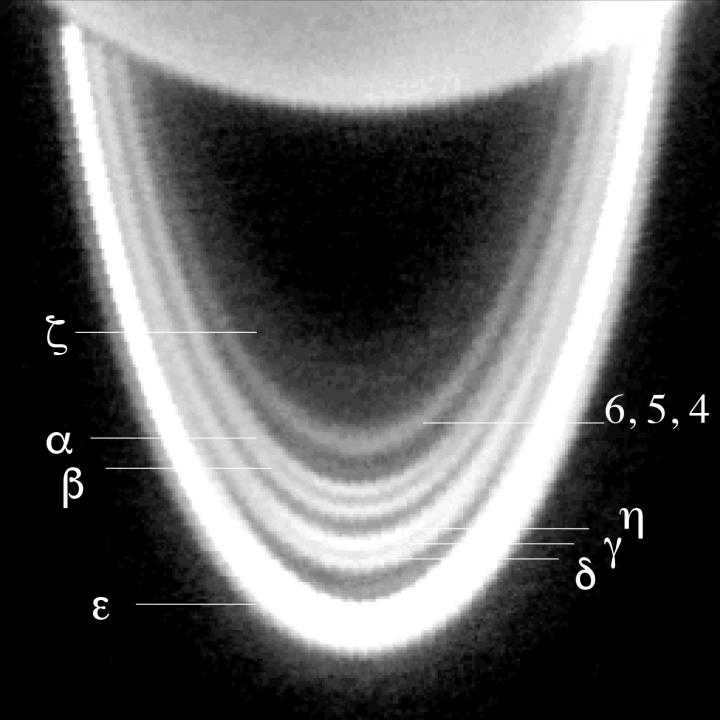
When this picture was taken, it was using a wavelength of 2.2 microns. The image displays the primary ring system, which reflects sunlight. In the gaps between the main rings, which consist of particles that are at least one centimeter in size, there are visible layers of dust. The photograph is credited to eurekalert.org and was taken by the Keck telescope in July 2004.
There are 2 elements included in the collection, Myu and Nu (the objects are named R2003U1 and R2003U2).
This particular duo is not well understood yet, and it was first observed by the Hubble orbiting telescope.
It is believed that the rings Mu and Nu are made up entirely of dust and do not contain large particles. Mu is the outer ring and it appears to be less bright.
However, each ring system possesses its own unique characteristics, making them all distinct and visually stunning. Take Jupiter’s rings, for instance, which are sparsely populated with predominantly dark and minuscule particles. These rings are practically invisible, leading us to often envision Jupiter without any rings at all.
On the other hand, Saturn’s rings are composed primarily of frozen water, contributing to their luminous appearance.
As for Neptune’s rings, they are exceptionally thin compared to others, with certain segments exhibiting varying densities. When observed from Earth through high-powered telescopes, these rings may resemble arcs or incomplete circles.
There is often mention of the fact that William Herschel, the English astronomer who discovered Uranus in 1781, observed the rings of the ice giant even at that time. However, this claim is incorrect. While Herschel was indeed a brilliant scientist and a skilled observer of the night sky, even with a very good and high-quality amateur telescope, it is quite difficult to see Uranus itself, let alone its rings. Furthermore, the optics of that time were much weaker compared to today. Only the most powerful modern telescopes, aided by special electronics, would be capable of examining the rings in detail from Earth.
The ring system of Uranus is easily observable through a telescope, although it is not as impressive as Saturn’s rings. The initial investigations of Uranus began in the late 18th century, during which scientists were perplexed by the presence of rings around the planet. However, it was not until 1917 that American astronomers at the Kuiper Observatory were able to determine the exact number of rings surrounding Uranus, discovering a total of nine.
The characteristics of Uranus’ rings are not completely comprehended. It is recognized that Uranus possesses thirteen rings. The potential presence of fragmented arcs and dust bands among the ones examined is not ruled out. In contrast to the formations observed in Saturn, these structures are dim and slender, composed of sizable fragments. The potential origin of their formation could be attributed to the disintegration of moons due to tidal forces or as a consequence of a collision. The rings are estimated to be no more than 600 million years old. The actual process of their formation was relatively brief, taking only 100-1000 years.
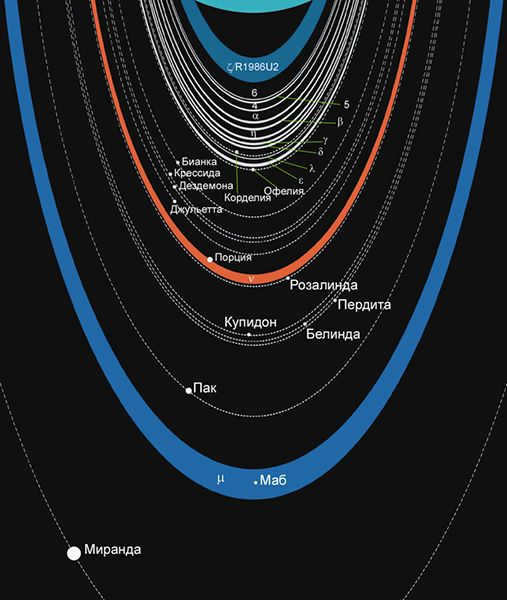
Any modifications in the cost, range, and characteristics of the item or termination of its production may be made by the producer without any prior notification.

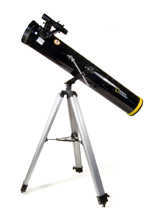
Additional reviews and articles on telescopes and astronomy:
Evaluations of optical equipment and accessories:
Guides on selecting, configuring, and initiating your initial observations with telescopes:
Uranus stands out among the planets in our solar system due to its unique characteristics, particularly its system of satellites and rings. Unlike other planetary systems, Uranus has a complex arrangement of satellites and rings that have been thoroughly studied thanks to advancements in space technology and powerful telescopes during the late 20th century. These advancements have allowed scientists to identify numerous satellites orbiting Uranus and understand the intricate composition of its rings. However, the exact nature of the substances that make up these rings remains a mystery, with astronomers still unable to definitively determine their composition. One thing that has been established is that the amount of ice present in Uranus’ rings is surprisingly low, which is highly unusual for cosmic phenomena.
In terms of age, Uranus’ rings are considered relatively young compared to other cosmic objects. However, there is a discrepancy of 200 thousand years among different groups of scientists when it comes to determining the exact moment of their formation.
The celestial bodies orbiting around Uranus are distinct from the satellites of other planets in the solar system in that, unlike those satellites, they are named after literary characters from English writers rather than heroes of the ancient Greek epic. These names were given to them by the Herschel father and son, who were the discoverers.
Currently, a total of 27 satellites of the planet have been found. Four of them were discovered in the 18th century, and the fifth satellite, Miranda, was discovered in 1948.
Collection of names of Uranus’ satellites
Organized in the record by proximity to the planet
Interior
The interior satellites are those that orbit between Miranda and the planet itself. There are a total of 13, each being relatively small in size. The smallest one, Cupid, measures 18 kilometers in diameter. On the other hand, the largest one, Puck, has a diameter of 162 kilometers. These celestial objects possess a dark complexion.
The masses of the satellites differ significantly: Titania accounts for 40% of the overall mass, while Oberon, Umbriel, and Ariel jointly make up 23% of the mass. All other satellites contribute merely 0.8% of the total mass.
Unusual
Unusual moons are the 9 farthest celestial objects. They have elongated, elliptical orbits in which they revolve in the opposite direction to the movement of the planet. In contrast, the other 18 celestial objects orbit in a direction similar to that of the planet.
Makeup of moons
Moons within the orbit of Oberon have a rocky makeup with small pieces of ice. The makeup of the moons that orbit outside of this orbit is still unknown, but it is believed to be asteroids captured by the gravitational field of the planet.
Oberon
The enormous Oberon is made up of methane compounds. Experts believe it possesses a heated core and mantle. The surface of Oberon is marked by canyons and craters resulting from both asteroid collisions and volcanic eruptions.
Titania
Titania, the largest celestial object in orbit around the planet, consists of ice containing different combinations of silicon, carbon, and nitrogen. No presence of an atmosphere has been detected on this moon.
Ariel
Ariel, the third largest moon, is characterized by its vast ice deposits that constantly shift across its surface, resulting in the formation of massive rift valleys.
Overall, the composition of Ariel and other moons in the solar system is similar to that of celestial bodies found in other planetary systems.
The orbital speeds of different celestial bodies in Uranus vary significantly. Cordelia holds the record for the highest velocity, reaching 10.8 kilometers per second, which is nearly double the speed of the planet itself. On the other end of the spectrum, Oberon, the largest celestial body, has the slowest speed at 3.1 kilometers per second.
As for the recently discovered celestial bodies Perdita, Caliban, Stephanie, Sycorax, Prospera, and Setebe, their velocities remain unknown at this time.
In order to calculate the initial velocity of a Uranus satellite, one must have access to information such as the satellite’s radius, mass, and the gravitational constant. However, for these small celestial bodies that have been recently discovered and are not well-documented, their velocities cannot yet be determined due to the lack of accurate data on their mass and diameter.
The challenge of observing them offers little optimism for determining their velocities in the upcoming years.
Saturn’s rings
These celestial formations were accidentally discovered by astronomers Elliott and Dunham in 1977. While observing an eclipse of the planet from an airplane-mounted telescope, they stumbled upon the 9 rings. Prior to this discovery, astronomers had no knowledge of Uranus’ rings as they had been focused on studying the planet’s atmosphere. Although the planet’s discoverer, William Herschel, claimed to have observed the rings, the astronomical community of that time doubted his findings.
The attention of astronomers in the late 20th century was drawn to Uranus following the discovery of rings on a planet other than Saturn. This discovery disproved the notion of Saturn’s planetary system being unique. The ring formations on Uranus differ from those on Saturn, with the Uranus rings having a significantly smaller total mass compared to Saturn’s rings, which are a thousand times greater in mass.
Astronomers classify the rings into three groups:
The ring system of Uranus is believed to have formed 800 million years ago, potentially from the remnants of satellites that collapsed after a collision. However, there is a disagreement among astronomers regarding the age of the ring planes, with some suggesting they were formed 600 million years ago. This difference of opinion among experts makes it difficult to determine the exact age of the rings. Some astronomers even propose that these ring planes may be as young as 100 million years old.
The formations resulting from the collision of small celestial bodies are similar to the 9 main rings. Currently, astronomers believe that the dusty and outer ring planes are mysterious formations. The mechanism that keeps the narrow rings within their boundaries remains unknown. At a significant distance from each other, the rings are narrow and dense.
Composition
Thin ring formations are made up of dust particles. The broader ones contain sizable objects measuring up to 20 meters in diameter. The exact chemical composition of the rings remains a mystery. It is believed that they are composed of a combination of ice and an enigmatic form of dark matter that has yet to be fully comprehended. This elusive dark matter is extremely challenging to study, even with cutting-edge telescopes. The astronomical community has not yet put forth any hypotheses regarding the composition of the rings. This remains a subject for future investigation. Some experts speculate that the dark matter may consist of modified organic substances.
The sounds emanating from space have been discovered to bear a resemblance to terrestrial sounds and evoke the melodies of earthly nature. It is hypothesized that the sounds produced by the rings encircling Uranus possess the ability to enhance meditative practices.
The celestial structures surrounding Uranus, which have only recently been unearthed due to the challenges associated with observing them, remain enigmatic phenomena and substances. However, even amidst this unassuming backdrop, the resonance between the harmonies of the planet’s rings and earthly natural tunes is an astonishing occurrence.
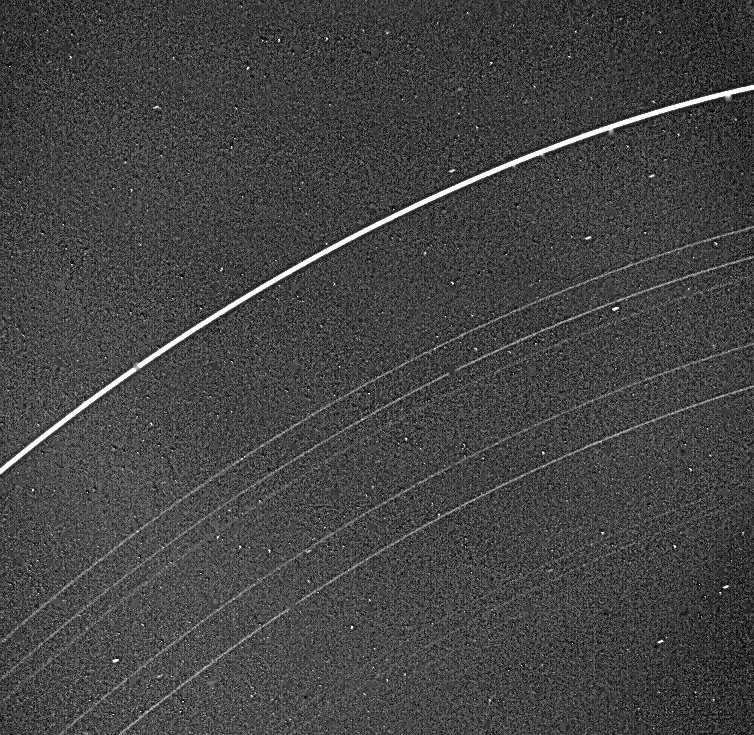

The planet Uranus possesses a set of rings that exist in a unique position, situated between the broader rings encircling Saturn and the more simplistic ones surrounding Jupiter and Neptune. The initial revelation of these rings occurred on the 10th of March in 1977, courtesy of James Elliott, Edward Dunham, and a group of other researchers.
In 1986, two additional rings were identified through the examination of images transmitted by the Voyager 2 interplanetary probe. In a later period between 2003 and 2005, the Hubble Space Telescope contributed to the discovery of two outer rings.
At present, there are 13 known rings
The size of these rings varies from 38000 km to 98000 km. It is also possible that there are additional faint dust bands and incomplete arcs between the main rings. These rings are made up of very dark particles with an albedo of less than 2%. It is likely that they are composed of water ice along with dark organic matter.
The majority of Uranus’ rings are not transparent and have a width of only a few kilometers. The ring system generally does not have a significant amount of dust and is made up of large objects that are 0.2-20 m in diameter.
Some of Uranus’ narrow rings are made up of small dust particles, while others may contain larger objects.
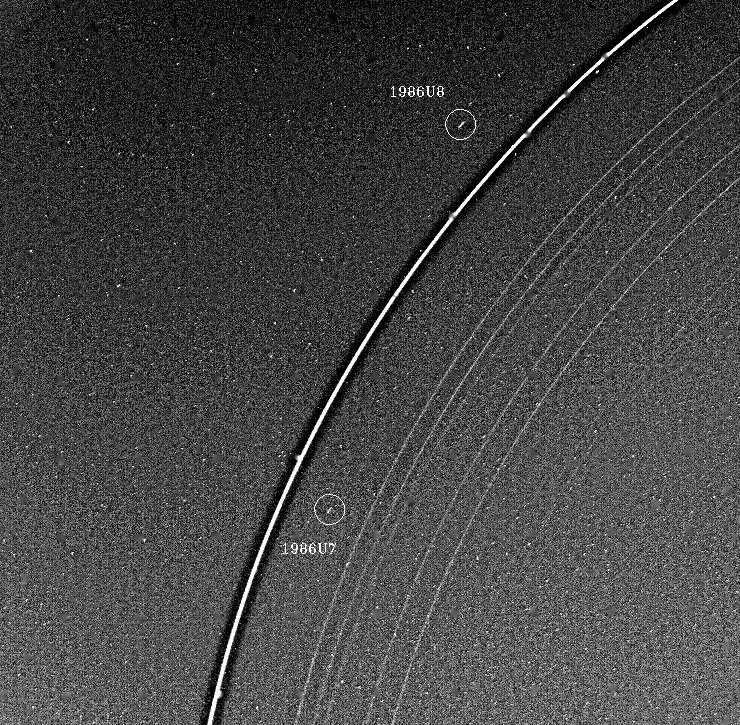
The lack of dust can be attributed to the aerodynamic drag experienced by Uranus’ exosphere. These rings are relatively young, with an age of no more than 600 million years. It is believed that the ring system originated from the remnants of satellites that once orbited the planet. Following the collision, the moons broke apart into numerous particles, which managed to survive as narrow and optically dense rings only within specific regions of maximum stability.
There are three categories that these rings can be classified into
There are a total of nine narrow main rings, two dust rings, and two outer rings. The faint rings and dust bands may have a temporary existence or they may be made up of multiple individual arcs that are occasionally exposed when Uranus passes in front of a star.
Particles in opposition exhibit an increase in luminosity, indicating a lower albedo when not observed in scattered light. They have a reddish hue in the ultraviolet and visible parts of the spectrum, while appearing gray in the near infrared.
The specific chemical composition of these particles remains unknown. However, they cannot consist solely of pure water ice, like Saturn’s particles, as they possess a darker shade, surpassing that of the inner satellites.
Therefore, it is likely that these particles are composed of a combination of ice and dark material. The exact nature of this material remains uncertain, but it could potentially be an organic compound that has been significantly darkened by charged particles originating from Uranus’ magnetosphere.

The position of the inner new ring, which was discovered by the Hubble Space Telescope and confirmed by ground-based observations with the Keck II telescope in Hawaii, is indicated by the dotted line. The first image showcases the existing ring system, while the second image provides a closer look at the faint rings captured in infrared by the Keck telescope. Additionally, Hubble detected another new outer ring that was not observed by the Keck telescope, suggesting that it contains less dust and is more challenging to detect. These new findings were obtained using Hubble’s enhanced camera, operating in visible light. The faint, dusty rings that encircle Uranus extend far beyond the previously known 11 rings.
In 1781, the notable and significant event of the discovery of Uranus took place. It was accomplished by none other than the renowned English astronomer, William Herschel. This remarkable achievement was a direct result of his unwavering dedication, meticulous observation, and unwavering resolve.
An overview of William Herschel – the brilliant mind behind the revelation of Uranus
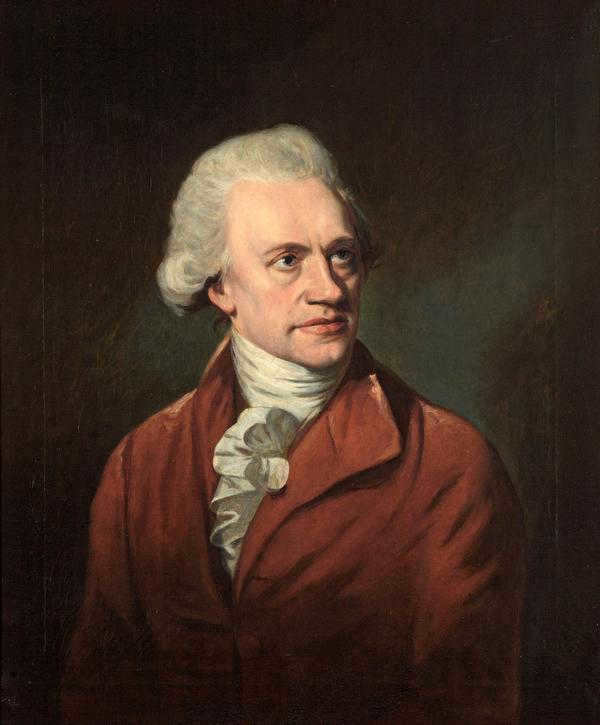
William Herschel, a renowned astronomer, is famously known for being the first person to discover the planet Uranus.
William Herschel holds an esteemed position in the field of astronomy, having made numerous notable discoveries, such as the identification of the Uranian moons, Titania and Oberon. However, his journey to success was far from easy, as he initially pursued a career in music as a member of a military band, composing a remarkable collection of 24 symphonies. Born in Germany in 1738, Herschel relocated to England in 1775 while serving in the military, ultimately leaving his regiment to pursue his passion for music.
Herschel had a straightforward principle when it came to observing – he would not leave any portion of the celestial sphere unexamined, not even the tiniest fraction. It was an ambitious scheme, one that had never been attempted before. Assisting him in this monumental endeavor was his sister, Caroline Herschel, who made her own significant contributions to the field of astronomy through her dedicated collaboration with her brother.
The Unveiling of Uranus
Following seven years of unwavering scrutiny of the expansive heavens, it was on the 13th of March, 1781, that William directed his 7-foot telescope towards the region nestled between the Gemini and Taurus constellations. To his astonishment, one of the stars adjacent to ζ Taurus did not manifest as a mere luminous speck, but rather transformed into a discernible disk. This sudden metamorphosis led Herschel to promptly discern that this celestial body he had laid eyes upon was not a star in the slightest, for stars assume the form of points regardless of magnification, with only their radiance oscillating.
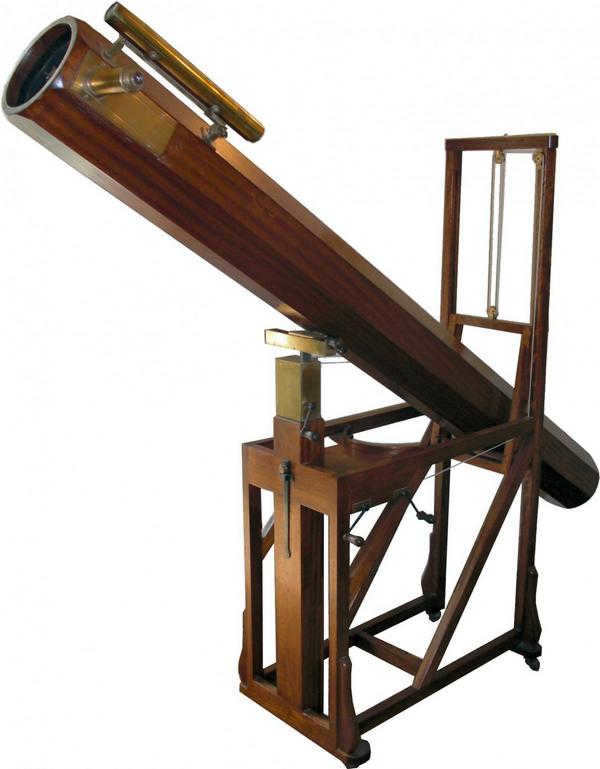

Herschel’s 7-foot telescope was instrumental in the groundbreaking discovery of Uranus.
William conducted observations of the peculiar object using different eyepieces, thereby altering the telescope’s magnification. As he increased the magnification, the unknown object appeared larger in size, while the surrounding stars remained unchanged.
Baffled by this phenomenon, William continued his observations and noticed that the unidentified celestial body exhibited its own motion in relation to the other stars. He initially believed it to be a comet, despite its lack of a tail, and documented his findings in his journal on March 17.
In a letter to the Royal Society, Herschel wrote:
When I first spotted this comet, I used a magnification of 227. Based on my previous experiences, I have noticed that the size of stars does not change in proportion to the magnification of the lenses like planets do. To further investigate, I decided to use lenses with magnifications of 460 and 932. I discovered that the size of the comet increased in proportion to the increase in magnification, which led me to believe that it was not a star since the size of the stars I compared it to remained the same. Additionally, when I used even higher magnifications, the comet appeared blurry and less visible, while the stars remained bright and clear. This was consistent with the thousands of observations I had made before. A second observation confirmed my initial assumptions – it was indeed a comet.
Once the unfamiliar comet became known to astronomers, it immediately generated a significant amount of interest. By April, Royal Astronomer Neville Maskelyne proposed the notion that the object could potentially be both a comet and an undiscovered planet. Subsequently, routine tasks were undertaken, such as observations and the calculation of its orbit. Then, in 1783, Herschel acknowledged the fact that he had indeed stumbled upon a peculiar celestial body, ultimately determining it to be a planet, which he aptly named after King George. Interestingly, on January 11, 1787, Herschel made an additional discovery by identifying a pair of moons orbiting Uranus – Titania and Oberon. These moons remained unseen by human eyes for the next 50 years, as the telescopes of that time were not powerful enough to detect them. Currently, Uranus is known to have 27 satellites. Nevertheless, the detection of Uranus stands out as one of the most significant accomplishments in this scientist’s lifetime.
Due to his outstanding achievements, King George III granted William Herschel a lifelong stipend of 200 pounds, which was a substantial sum of money at that particular time. Starting from 1782, he dedicated himself to enhancing the construction of telescopes, and in 1789, he successfully constructed the most massive telescope ever built – boasting a mirror diameter of 126 cm and a focal length of 12 meters.
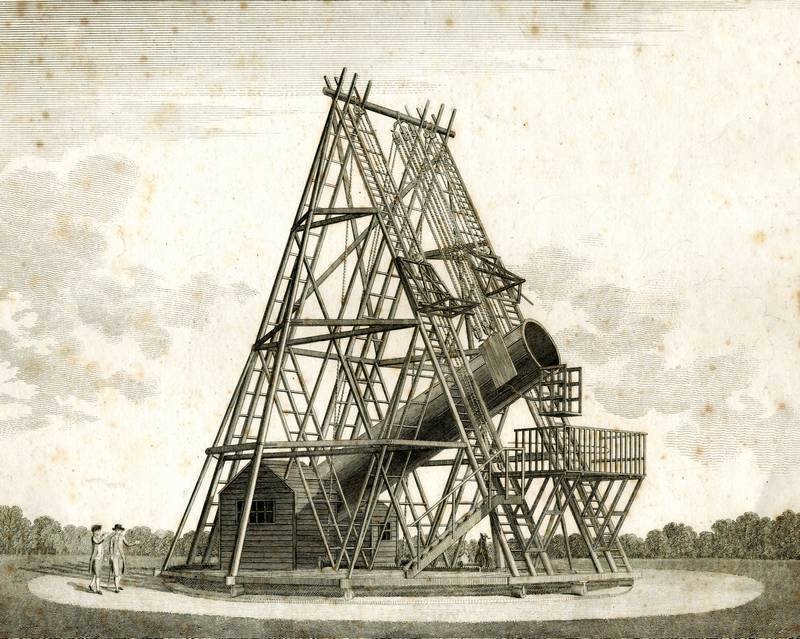
The William Herschel Telescope is the largest telescope ever constructed by William Herschel.
Throughout his lifetime, Herschel made numerous notable discoveries. For instance, it was previously believed that double stars were simply positioned closely together in the sky. However, Herschel proved that some of these double stars are actually star systems. Additionally, he was the first to deduce that our Milky Way galaxy is a flat disk of stars, with our solar system located within it. Although Herschel made many other significant discoveries, these will have to be saved for another time.
It is important to mention that William Herschel was primarily an amateur astronomer who dedicated a considerable portion of his life to this field of study. In fact, craters on the Moon, Mars, and Mimas, as well as other astronomical projects, have been named in his honor.
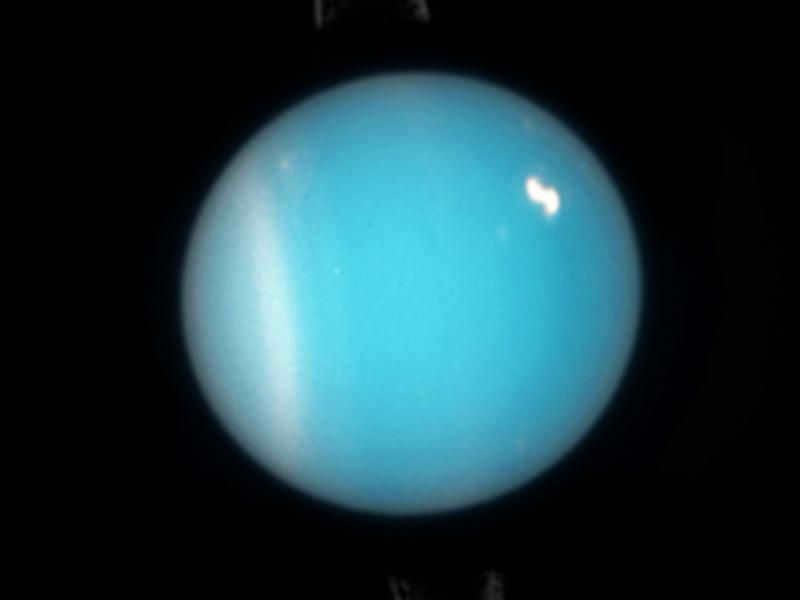
An image depicting the planet Uranus. It is possible to observe the presence of rings around the planet.
Regarding Uranus, there was limited knowledge about it for an extended period. This celestial body lacks any remarkable external features – it simply displays a blue disk. However, in 1977, the discovery of its rings was made (although Herschel claimed to have seen the ring of Uranus in 1789, his claim was not widely accepted), and subsequent space exploration provided a wealth of new information. Consequently, Uranus is a rather unassuming planet, capable of astonishing its researchers. However, further details will be covered in a separate article.
The planet Uranus was discovered on March 13, 1781 by astronomer William Herschel. While observing the sky through an optical telescope, Herschel initially mistook Uranus for a comet. His meticulous and time-consuming observations of star systems using powerful telescopes laid the groundwork for the development of “scientific” astronomy.
It was later discovered that Uranus had previously been observed multiple times, but was mistaken for a star. The earliest recorded observation of Uranus dates back to 1690, when John Flamsteed classified it as the 34th star of Taurus according to the prevailing system of stellar magnitude designations at the time.
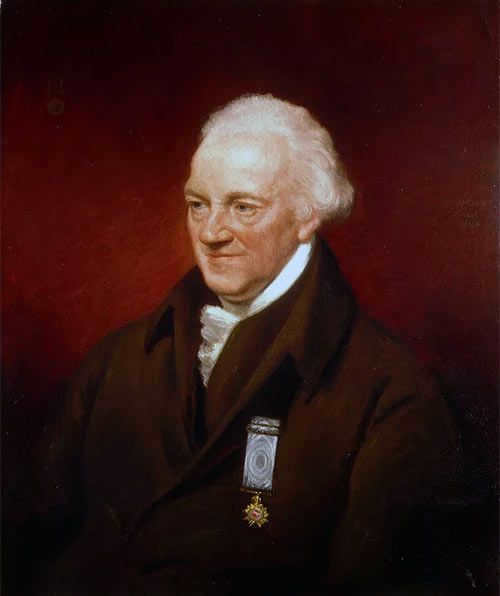

The English astronomer William Herschel is credited with the discovery of the planet Uranus
During his usual evening observations, Herschel noticed a peculiar star in the vicinity of faint stars in the Gemini constellation. This star appeared larger than the others and had a distinct disk shape. Initially mistaking it for a comet, Herschel shared his findings with fellow astronomers, leading to the recognition of the discovery of Uranus.
The planet Georgium Sidus (or George’s Planet) was given its name by Herschel himself as a tribute to King George III of England, who was its patron. Scientists, however, referred to the planet by the name of the astronomer himself. The name “Uranus” was initially chosen as a temporary name, in accordance with tradition, and was taken from ancient mythology. It wasn’t until 1850 that the name “Uranus” was officially adopted.
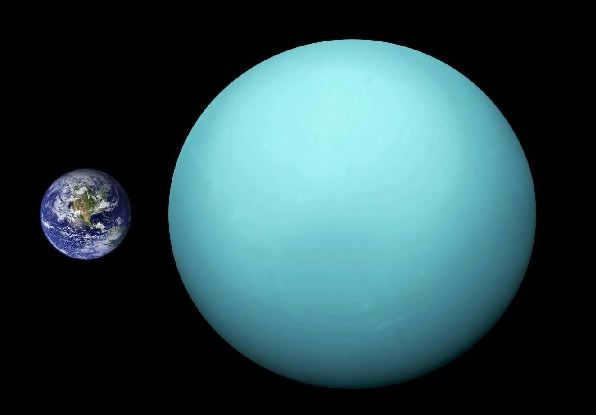

Uranus is classified as a gas giant planet. The provided illustration showcases the relative proportions of Uranus in relation to our planet.
Exploring Uranus in Depth
Uranus, located approximately 3 billion kilometers away from the Sun, boasts a volume nearly 60 times that of our home planet Earth. The groundbreaking discovery of such a massive celestial body marked a historic milestone in scientific advancement, as it was the first time astronomers had spotted a planet of this scale using a high-powered telescope. Prior to this momentous finding, only the five known planets had been visible to the naked eye.
This remarkable new addition to our solar system not only expanded its size by over two-fold but also earned its discoverer great acclaim.
In more recent times, Uranus has only been visited once by the Voyager 2 spacecraft, which made a momentous flyby at a distance of 81,500 kilometers on January 24, 1986.
“Voyager 2” successfully transmitted over a thousand images depicting the surface of the planet and a wealth of additional information regarding the planet, its moons, the existence of rings, the composition of the atmosphere, details about the magnetic field, and characteristics of the surrounding space near the planet.
Utilizing a range of instruments, the spacecraft analyzed the composition of the previously known ring and made the exciting discovery of two new rings surrounding Uranus. The gathered data also revealed that the planet has a rotation period of 17 hours and 14 minutes.
Furthermore, Uranus has been found to possess a magnetosphere that is both substantial in size and remarkably unique.
Discovery Timeline
Upon commencing his observations of the recently discovered planet, Herschel initially misidentified it as a comet. He detected a celestial entity within the Taurus constellation, despite astronomical records indicating an absence in that particular location. Subsequently, by altering the lenses on his telescope, he observed that this cosmic entity exhibited movement in relation to the surrounding stars, with its dimensions gradually expanding.


Herschel came to the realization that the celestial object he observed was not a star, nor a comet, as there was no visible head or tail. He also noticed that while comets were typically clear when viewed through a telescope, the image of this object was blurry. Herschel was able to determine that the orbit of the newly discovered planet was elliptical and highly elongated.
During this time, Russian scientist A. Lexel calculated that the distance from Earth to this celestial body was 18 times greater than the distance to the Sun. Since comets did not exist at this distance, astronomer I. Bode suggested classifying the object as a planet.
After two years, Herschel himself confirmed that the recently discovered heavenly object is indeed a planet. This significant event earned him a lifelong scholarship of 200 thousand pounds and an invitation to reside in the royal palace of the King of England. The monarch desired to personally observe celestial bodies through the astronomer’s telescopes.
In order to bestow a name upon the newly discovered planet, scientists looked to Greek mythology. As this celestial body orbited beyond Saturn, and since according to mythology, Saturn’s father was the god of the sky, they chose to name the planet Uranus. This cosmic entity was the only one whose name had ties to Greek mythology rather than Roman mythology.
Description and physical structure of the planet
Differing from Saturn and Jupiter, which are primarily made up of hydrogen and helium, the newly discovered planet is comprised of a multitude of distinct variants of ice. In this regard, Uranus bears a greater resemblance to Neptune, which also lacks metallic hydrogen.
As a result, astronomers classify these two planets as a unique category of ice giants. The atmosphere of Uranus is comprised of hydrogen and helium, with a small proportion of methane and other elements. Among all the planets, it is considered the coldest, with temperatures dropping as low as -224 °C.
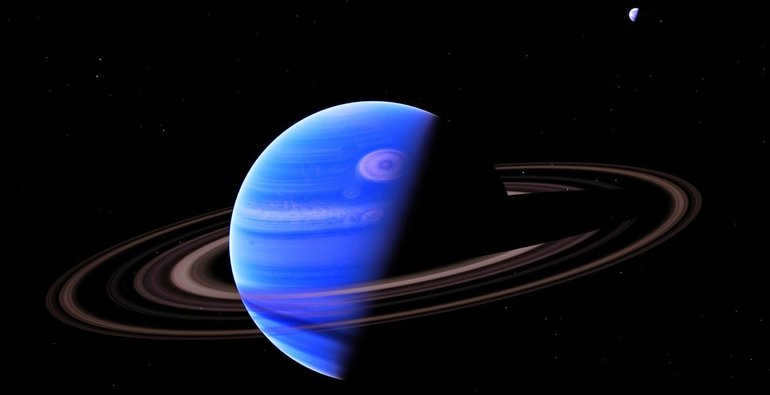
The reason for this is the planet’s farthest distance from the Sun. Scientists theorize that the planet’s clouds are composed of multiple layers, with water making up the lower layer and methane the upper layer. The celestial body has a surface and interior that consist of three distinct layers:
Similar to gas giants, Uranus possesses a ring system and a magnetosphere. It is also home to 27 satellites, second only to Saturn and Jupiter in the solar system. The planet’s rotation is unique in that its axis is slightly tilted in relation to its orbit. As a result, Uranus experiences seasons on a unique schedule and the sun never rises very high above the horizon during the day.
The celestial body’s path is situated seventh in line from the Sun, while the astronomical object itself is acknowledged as the fourth largest in terms of mass and third in terms of diameter.
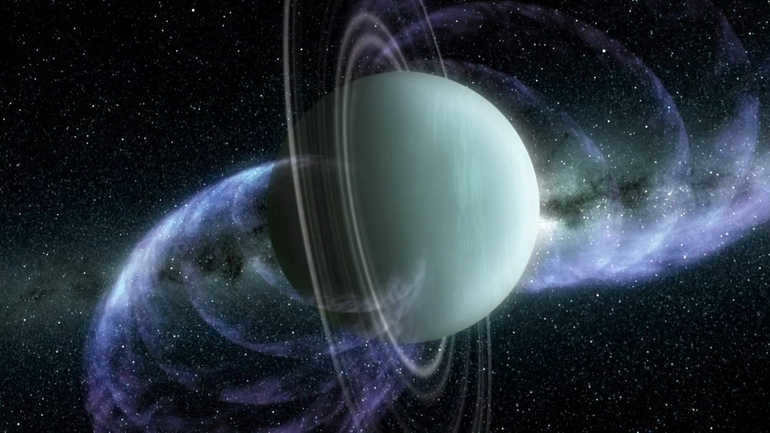
The planet possesses a ring system and a magnetosphere.

- The mass of Uranus is 8.6832×1025 kilograms;
- The equatorial radius is 25.559 thousand kilometers;
- The polar radius is 24.973 thousand km;
- The density is 1.27 g/cm3;
- The free fall acceleration is 8.87 m/s2;
- The axial inclination is 97.77°;
- The average orbital velocity is 6.81 km/s;
- The synodic rotation period is 369.66 days;
- The revolution around the Sun takes 84 years.
Particulars of the examination of the heavenly object
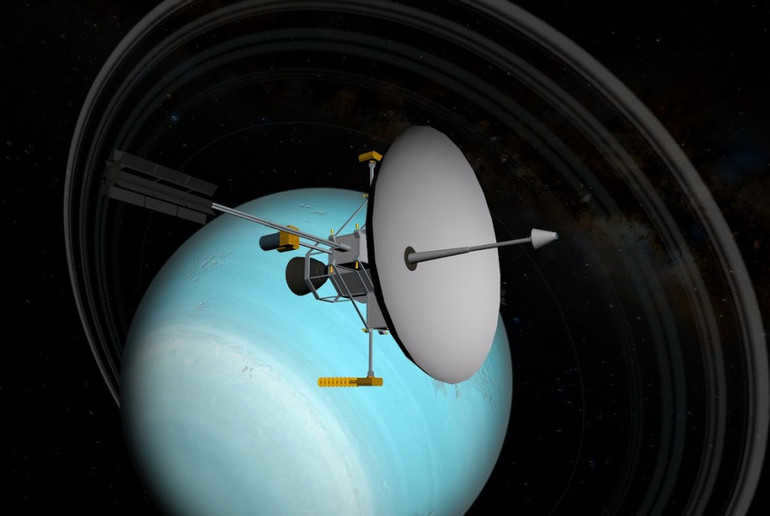
Scientists faced a challenge when working with equipment that was not specifically designed for operating at such a long distance from the control panel. As a result, as the mission progressed, the on-board computers had to undergo reprogramming. To improve transmission speed to the control room, a video compression setting was implemented, and all antennas were consolidated to enhance reception.
Throughout the spacecraft’s journey across Uranus’ orbit, the surface and satellites were continuously captured by TV cameras. Due to the limited illumination from the Sun, long exposure photographs were necessary. Consequently, only the southern hemisphere of Uranus was successfully captured by the spacecraft. Research on the planet will continue, with the next mission planned for the early 2020s.
Uranus’ Satellites
A fascinating aspect of Uranus is its satellite nomenclature. In contrast to other satellites, which are named after characters from Greek mythology, Uranus’ satellites are named after characters from the works of Shakespeare and Pope.
The largest satellites, Oberon and Titania, were discovered by Herschel. Ariel and Umbriel were discovered by Lassel, and 100 years later Miranda was found by Kuiper. The remaining satellites were discovered through NASA’s space exploration efforts.
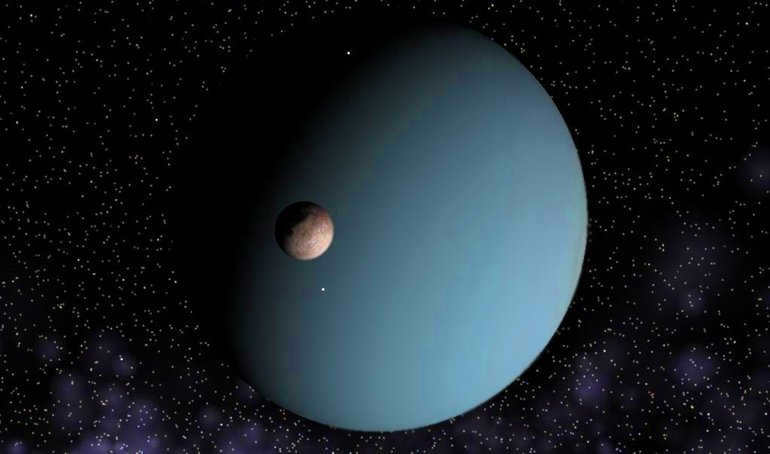
- Miranda is the closest and shallowest of Uranus’s satellites and is known for its massive canyon on its surface.
- Ariel exhibits a relatively young structure with only a few small craters. Scientists hypothesize that a recent impact event has covered up older damage.
- Umbriel, one of the smaller satellites, is the darkest and oldest. It displays a significant number of crater formations and bright rings.
- Oberon is the farthest object and features numerous crater formations with unexplained dark spots at their bases.
- Cordelia and Ophelia are satellites that support Uranus’s outer ring.
There are eight small celestial objects located between these two satellites and Miranda. The proximity of these objects is puzzling to scientists, who cannot comprehend how the satellites managed to avoid colliding. There is a hypothesis that there may be additional objects within the rings that have not yet been detected.
Fascinating information
Uranus was the initial object to be discovered in modern history thanks to the aid of a telescope. It completes one full rotation on its axis in 17 hours and 14 minutes. Similar to Venus, this celestial body rotates in the opposite direction compared to Earth and the other planets. Scientists hypothesize that this peculiar axial tilt is a result of a collision Uranus had with another celestial object.
They theorize that this cataclysmic event caused the planet’s axis to shift by nearly 90 degrees. During a storm on Uranus, wind speeds can reach up to 900 kilometers per hour.
Uranus has a mass 14.5 times that of Earth, yet it is considered the lightest gaseous celestial body. In terms of density, this cosmic body is only surpassed by Saturn.
Currently, there are a total of 13 satellites, with two of them being of substantial size while the remaining ones are only a few kilometers in width. The reason behind their small size is attributed to their relatively recent formation, which occurred shortly after the destruction of other satellites by celestial objects in space.
Unearthed during the latter part of the 18th century, this particular chemical element was christened with the moniker of the recently discovered planet.

In 1781, British astronomer Frederick William Herschel made a significant discovery while observing the stars using a telescope. Initially, he mistakenly identified the object as a comet. Subsequent observations by other astronomers revealed that the object followed an almost circular orbit, leading to the realization that a new planet had been found.
Uranus, a planet with a brief description. Initially named George’s Star to honor King George III of England, the name did not gain popularity. Following the tradition of naming the planets in the solar system after gods, the planet was eventually renamed Uranus after the god of the sky.
Overview
Uranus, the seventh planet in our solar system, is the third largest planet in terms of size and the fourth largest in terms of mass.
Uranus is classified as a gas giant and has an equatorial radius of roughly 25,560 kilometers and a polar radius of 24,973 kilometers. The planet has a spherical shape that is slightly flattened at the poles.
Structure of Uranus
The configuration of Uranus consists of its atmosphere, which is the outermost layer of its gaseous envelope surrounding the central part of the planet. This valuable information was acquired through the use of the Voyager 2 spacecraft, enabling the capture of images depicting the atmospheric spectrum. The atmosphere commences at a distance of about 300 kilometers from the planet’s outer surface. Its composition mirrors that of other gas giants, with hydrogen comprising more than 70%, helium constituting 25%, and methane accounting for approximately 2%.
Uranus exhibits extreme weather conditions, with maximum wind speeds on the planet reaching a staggering 240 meters per second. Additionally, it holds the title for being the coldest planet in our solar system, with temperatures dropping to a chilling minus 224 degrees Celsius. Furthermore, similar to other celestial bodies, Uranus possesses a magnetosphere that contains various charged particles, including protons, electrons, and ions.
The planet’s magnetic field is inclined at an angle of 59 degrees to its axis of rotation. Based on the latest data, it has been observed that the magnetic field of Uranus rotates along with the planet, which results in a daily change in the positions of its magnetic poles. Moreover, Uranus is known for its captivating display of the aurora borealis.
The Rings of Uranus
While Saturn’s rings are widely recognized, not many people are aware of the rings surrounding Uranus. These rings were first discovered by American astronomer James Eliot in March 1977.
The inner rings appear gray in color, while the outermost ring has a distinct blue hue. Scientists have hypothesized that this particular ring is composed of both ice particles and dark matter. Additionally, the width of the rings is relatively narrow, only spanning a few kilometers, with the central ring being the widest at approximately 100 km.
The positioning of the rings commences at a distance of around 40,000 – 50,000 kilometers. And only the two outer rings extend to a distance that is twice as large.
What precisely maintains the rings within their confines remains uncertain, but researchers are actively investigating this enigma.
The Moons of Uranus
In 1787, William Herschel, the discoverer of Uranus, found the first two satellites, Titania and Oberon. Subsequently, in August 2003, scientists Shepard and Jewett discovered the 27th satellite, which they named Margarita.
The satellites of Uranus can be categorized into three groups: the major satellites (consisting of five satellites), the irregular satellites (consisting of nine satellites), and the inner satellites (consisting of thirteen satellites).
The inner satellites, also known as moons, are composed of a mixture of dark material and water ice, giving them a dark appearance.
Irregular satellites, on the other hand, exhibit unconventional orbital behavior, such as elongated orbits, orbits in the opposite direction, or orbits at high inclinations to the equator.
Uranus possesses nine moons with orbits that are highly inclined and elliptical in shape.
The sizes of Uranus’ main moons vary significantly: Mirinda measures 472 km in diameter, Ariel measures 158 km, Umbriel measures 1170 km, Oberton measures 1523 km, and Titania measures 1578 km.
These moons are composed of a combination of ice and rock, and they exhibit craters on their surfaces. The most recently formed surface has been found on Ariel, while the oldest surface is located on Umbriel.
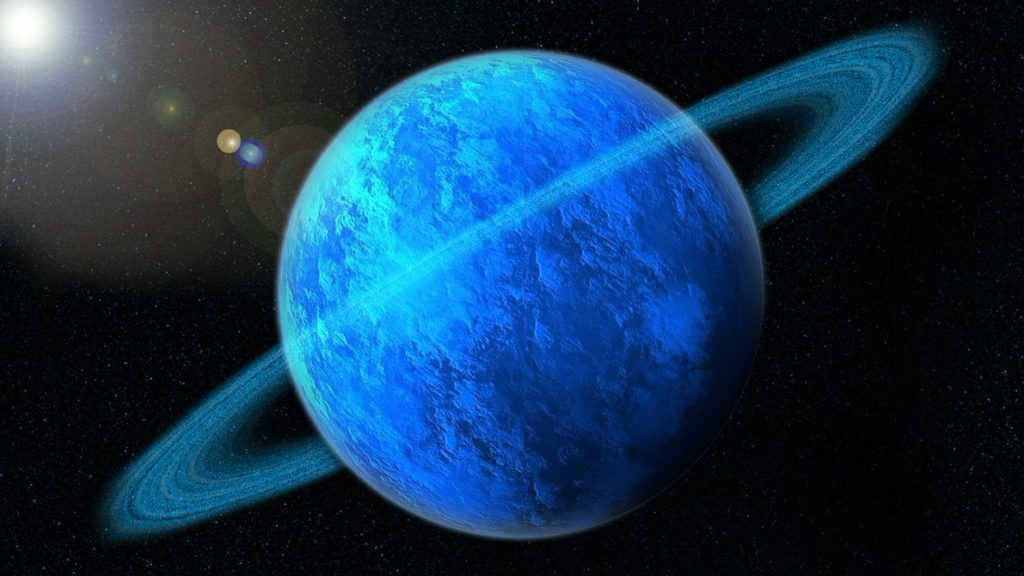
Uranus: A Fascinating Planet for Kids
Let’s explore the wonders of Uranus, the seventh planet from the sun! To understand how planets move, let’s use a yula as an example of the Earth and a ball as Uranus.
Did you know that Uranus is a gas giant? From Earth, it appears as a beautiful blue star. And if you look through a telescope, you can even see its large satellites.
The blue color of Uranus is caused by the presence of methane in its atmosphere.
Uranus holds a special place in history as the first planet to be discovered in modern times. In 1781, the English astronomer William Herschel spotted it through a telescope, initially mistaking it for a comet.
The planet was initially named after the English king, George, but it was eventually renamed Uranus, after the Greek god of the sky.
The planet Uranus is ranked as the third largest in terms of size, the fourth largest in terms of mass, and the seventh farthest from the Sun.
When it orbits around the Sun, Uranus appears to be almost lying down, with its axis tilted at an angle of 98 degrees in relation to the plane of its orbit. Additionally, Uranus rotates in a clockwise direction, opposite to its orbital motion.
It takes Uranus approximately 84 years to complete one orbit around the Sun, and its winter and summer seasons each last for 21 years.
Uranus has a relatively short day, lasting for 17 hours and 14 minutes.
Similar to Saturn, Uranus boasts its own set of rings, totaling 13 in number. These rings are not easily discernible as they consist of a mixture of stone particles, ice, and dark matter.
Each ring possesses varying widths and distances from the planet. The central ring spans 100 kilometers in width, while the others extend to just a few kilometers. The rings are positioned at distances from the planet ranging up to 50,000 km, with the outermost rings situated at a distance of 100,000 km.
Around Uranus, there are 27 satellites orbiting, which are also known as moons. These moons are all named after characters from the works of English playwright William Shakespeare (A Midsummer Night’s Dream and The Tempest) and English poet Alexander Pope (The Abduction of the Curl). They can be divided into three groups: intrinsic, irregular, and major. The moons of Uranus are believed to be composed of a combination of ammoniacal ice and rocks. Among them, the five largest ones – Ariel, Miranda, Titania, Oberon, and Umbriel – have been the most extensively studied.
In 2020, scientists have plans to launch a new space mission to Uranus, which will undoubtedly lead to more exciting discoveries. We eagerly await the continuation of this exploration.
The discovery of Uranus in 1781 by English astronomer William Herschel was a significant event. It was the result of his diligence, careful observation, and unwavering determination.
A short account of William Herschel’s life – the person who found Uranus

William Herschel, the renowned astronomer, is best known for his discovery of the planet Uranus.
Herschel, a prominent figure in the field of astronomy, is credited with numerous significant findings, including the identification of the Uranian moons Titania and Oberon. However, his path to success was far from easy, as he originally pursued a career as a musician in a military orchestra and even composed 24 symphonies! Born in Germany in 1738, Herschel eventually immigrated to England in 1775 while serving in the military. He ultimately left the army to pursue his passion for music.
Herschel’s journey into the field of astronomy took a circuitous route. Initially, he developed an interest in the mathematical principles behind music. This eventually led him to the study of optics, where his fascination with astronomy began to take root. Due to his limited financial means, Herschel started grinding mirrors and constructing telescopes for himself and for sale in 1773. His first telescope was a reflector with a focal length of 7 feet (approximately 2 meters), which he promptly used to explore the night sky.
Herschel’s approach to observation was straightforward – he aimed to leave no area of the sky unexplored, no matter how small. This ambitious plan had never been attempted before. Assisting him in his endeavors was his sister, Caroline Herschel, who also made significant contributions to the field of astronomy through her dedicated work alongside her brother.
The Unveiling of Uranus
After an unyielding pursuit of studying the expansive heavens for a span of 7 years, it was on March 13, 1781, that William directed his 7-foot telescope towards the region nestled between the constellations of Gemini and Taurus. To his astonishment, one of the stars adjacent to ζ Taurus did not manifest as a mere luminous speck, but rather transformed into a discernible disk. In that moment, Herschel swiftly comprehended that this celestial body was not a star at all, for stars maintain their dot-like appearance regardless of magnification, with only their luminosity fluctuating.


The discovery of Uranus was made using Herschel’s 7-foot telescope.
William conducted observations of the peculiar object using various eyepieces, altering the telescope’s magnification to higher levels. As the magnification increased, the previously unknown object appeared larger, while the surrounding stars remained the same.
Baffled by his findings, William continued his observations and noted that the mysterious celestial body exhibited its own movement in relation to the other stars. He initially believed that he had discovered a comet, although it lacked a tail. On March 17, he made an entry about it in his journal.
In a letter to the Royal Society, Herschel described his discovery:
As soon as the unfamiliar comet came to the attention of astronomers, it generated a significant amount of interest. As early as April, Neville Maskelyne, the Royal Astronomer, proposed that the object could be both a comet and a previously undiscovered planet. This led to the standard procedures of observation and orbit calculation. In 1783, Herschel confirmed that the peculiar object he had found was indeed a planet and named it after King George. On January 11, 1787, he made another remarkable discovery – two moons of Uranus named Titania and Oberon. These moons remained unseen for the next 50 years due to the limitations of telescope technology. Currently, Uranus is known to have 27 satellites. Nevertheless, the discovery of Uranus stands as one of the most significant achievements in this scientist’s career.
The Future of William Herschel
Due to his accomplishments, William Herschel was granted a lifetime scholarship of 200 pounds by King George III, which was a significant amount of money at the time. From 1782 onwards, he dedicated himself to enhancing the design of telescopes, culminating in the construction of the world’s largest telescope in 1789. This remarkable instrument boasted a mirror diameter of 126 cm and a focal length of 12 meters.

William Herschel constructed the largest telescope in existence.
Throughout his lifetime, Herschel made numerous groundbreaking discoveries. For instance, it was previously believed that binary stars were simply positioned closely in the sky. However, Herschel demonstrated that some of them are actually star systems. He was also the first to propose that our Milky Way galaxy is a flat disk of stars, with our solar system located within it. Although he made many other significant findings, those are stories for another time.
It is important to mention that William Herschel was primarily an amateur astronomer who dedicated a significant portion of his life to this field of study. As a tribute to his contributions, several craters on the Moon, Mars, and Mimas, as well as various projects, have been named after him.

An image displaying Uranus with its distinctive rings visible.
For a significant period of time, Uranus remained a mystery with little known about its characteristics. Its appearance is rather unremarkable, presenting as a simple blue disk without any notable features. However, in 1977, the discovery of its rings was made (although Herschel had claimed to see them as early as 1789, his observations were not initially believed). Subsequent space exploration missions have provided a wealth of new information, revealing Uranus to be a fascinating and surprising world. However, a detailed exploration of these findings merits a separate article.
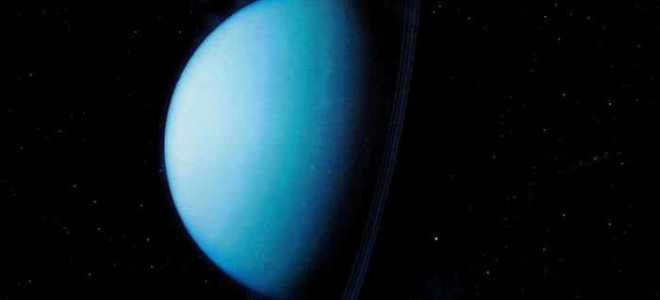
Uranus, the seventh planet in our solar system, holds a certain air of mystery and intrigue. This enigmatic world is adorned with its own unique qualities that make it truly fascinating. If you find yourself curious about the age of Uranus, its size, or the individual it is named after, you are not alone. Additionally, it is worth exploring the length of a day and a year on this distant planet, as well as how it differs from our home planet Earth. Furthermore, understanding the distance between Uranus and the Sun is essential to gaining a comprehensive understanding of this celestial body. Let us embark on a journey to unravel the secrets of Uranus, one step at a time.
Uranus, the first planet to be discovered in modern history, was initially mistaken for a star by astronomers who observed it periodically in the sky for almost a hundred years from the end of the 17th century. It was not until 1781 that astronomer William Herschel from England, while tracking the changes in the positions of stars through his telescope, finally discovered and identified Uranus as a planet. The official date of Uranus’ discovery is recorded as March 13, 1781.
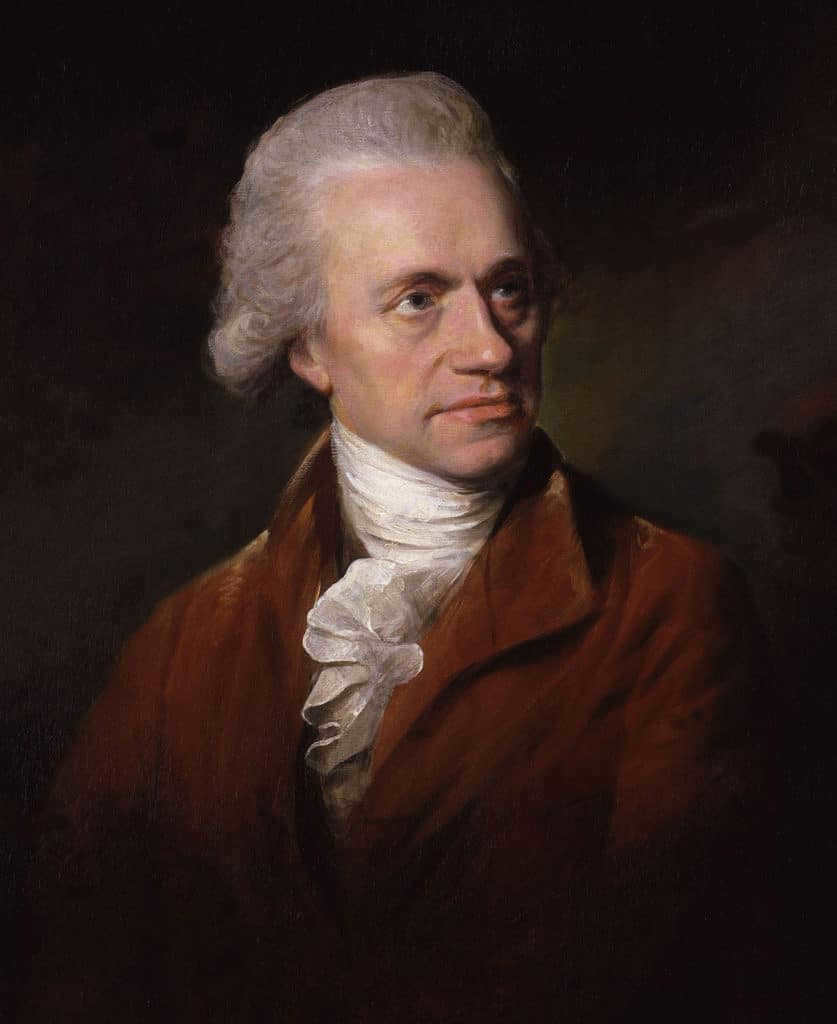
While examining the sky through his homemade telescope, which was the largest of its time, Herschel noticed that the fixed stars appeared to be slowly shifting. Through his observations, the astronomer deduced that it was not the stars that were moving, but rather the Sun and its planets that were moving in a specific direction. In fact, he observed Uranus, which was moving across the sky, thus proving that it was not a star.
Initially, Herschel mistook Uranus for a comet or a star when he first discovered it. However, after carefully observing it through his telescope and conducting calculations, he realized that he had actually discovered a new planet within our solar system. As a result of this groundbreaking discovery, Herschel was awarded a lifelong scholarship by King George III.
The Celestial Body Honoring its Namesake
The planet was originally intended to be named “George’s Star” in honor of the king. However, this suggestion was rejected by astronomers due to its lack of adherence to astronomical traditions.
Traditionally, planets were named after figures from Roman mythology. Uranus, however, derived its name from Greek mythology. The symbol representing Uranus combines elements from the symbols of the Sun and Mars, reflecting its role as the sky in Greek mythology, subject to the authority of the Sun and Mars.
Astronomer Johann Bode proposed that the planet be named after Uranus, the sky god from Greek myths and legends, who was the father of giants. Bode’s rationale was that since Saturn was the father of Jupiter, the next planet should be named after Saturn’s own father.
Legends and Myths Surrounding the Planet Uranus
As mentioned earlier, the name Uranus is derived from ancient myths where Uranus is portrayed as the father of Saturn. According to this myth, the powerful goddess Gaia, also known as Earth, gave birth to the vast blue Sky, which is Uranus. It is said that Uranus spread over Gaia like a protective roof.
When astronomers discovered numerous satellites orbiting Uranus, they decided to name them after characters from the comedies of Shakespeare and Pope.
The first two satellites were discovered by Herschel, who named them Oberon and Titania. In one of the myths, Oberon was the king of the elves, and Titania was his wife. They constantly argued over the concept of fidelity in marriage. They would only reconcile if they found a perfect match. Eventually, they found a couple who perfectly complemented each other, and Oberon and Titania reconciled.
Distance from the sun
The measurement of distance in the solar system is done in astronomical units. One such unit is the distance between the Earth and the Sun, which is known as 1 a.u. The gap between Uranus and the Sun is 19.2 a.u., which is considered to be a significant distance.
As a result of its considerable distance from our primary source of light, there are numerous intriguing and unusual facts about this celestial body:
- The time taken to orbit the Sun is one year on Earth, but on Uranus, it takes 84 Earth years.
- The poles experience 42 years of sunlight (summer) followed by an equal number of years in darkness (winter) due to their position relative to the Sun.
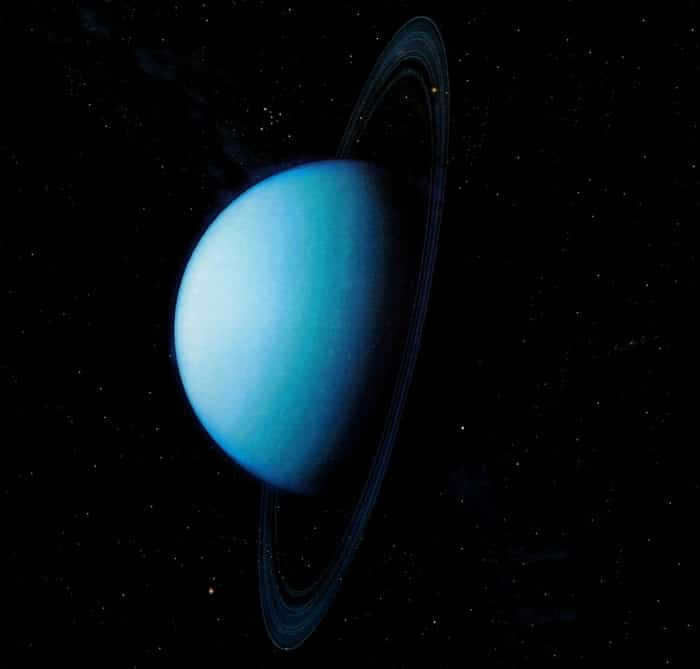
What is the distance between Earth and Uranus?
Scientists have made calculations and determined that it would take several years to reach the closest planets to us, such as Mars and Venus, at our current space speeds. However, if we were to embark on a journey to the more distant planet Uranus, it would take us several decades to reach it, as the distance from Earth is estimated to be between 2.6 and 3.15 billion kilometers.
The spacecraft known as “Voyager 2” had the opportunity to visit Uranus once during its mission. Launched by NASA in 1977, it traveled billions of kilometers and finally reached its destination nine years later.
Uranus within the Solar System
This celestial body stands out among the other planets. Here are some distinctive characteristics and features of Uranus:
- It is classified as an ice giant. It consists of approximately 80% ammonia ice, methane, and water. The planet’s atmosphere, which is primarily composed of hydrogen (83%), helium (15%), and methane (2%), gives Uranus its captivating green-blue color.
- Its magnetic field is highly inclined. Unlike most planets, Uranus has a magnetic axis that is tilted 60 degrees from its axis of rotation. As a result, it possesses an asymmetrical magnetic field. The northern hemisphere experiences a magnetic field that is 10 times stronger than the southern hemisphere. As Uranus moves, it resembles a rolling ball, while other planets appear to spin like wolves.
- The planet is noticeably compressed at the geographical poles.
- Uranus is approximately 4.5 billion years old, which is the same age as the Sun and all the other planets.
- The planet’s weight is 14 times that of Earth and its volume is 62 times that of Earth. In terms of density, it is second only to Saturn.
- Uranus consists of three main components. The center of the planet contains a small rocky core, which makes up 20% of the total radius. The middle part is a large icy mantle, accounting for up to 60% of the radius. The outer third part is made up of a helium and hydrogen atmosphere, comprising 20% of the radius. There is no metallic hydrogen in the planet’s interior. The equatorial radius of the planet is 25,000 kilometers.
- The second space velocity of the planet (overcoming the gravitational pull of the planet) is 21.3 kilometers per second. The Earth has a speed of 11.18 km/s, which is half of this value. Uranus has a first space velocity (entering a planet’s circular orbit) of 15.3 km/s, also twice as fast as Earth’s velocity, which is 7.91 km/s. Compared to other planets, Uranus ranks fourth in terms of these velocities, following Jupiter, Saturn, and Neptune.
- Uranus holds the title for being the coldest planet in the solar system. It has recorded the lowest temperature of -224 degrees Celsius, which is even colder than Neptune. Additionally, Uranus experiences extremely powerful winds, reaching speeds of up to 230 m/s. These winds are caused by significant temperature differences. The strongest hurricanes on Uranus can reach speeds of up to 900 km/h.
- Uranus, the planet that comes after Saturn, is known for its unique ring system, which consists of a total of 13 rings. These rings have a complex structure, with both inner and outer groups. Scientists believe that these rings may be the remnants of a previous satellite that orbited the planet. In addition to its captivating rings, Uranus is also home to an impressive collection of 27 satellites, which are composed of a combination of rocks and ice.
Other fascinating tidbits
The planet has some captivating details that may surprise and captivate:
- Uranus, unlike the other six planets in our solar system, rotates clockwise on its axis (similar to Venus) instead of counterclockwise.
- Pinpointing the precise temperature of Uranus’s interior is challenging. However, if conditions similar to those of other gas giants are possible, there is a chance that water could exist, potentially supporting life.
- Uranus is visible to the naked eye from Earth on a clear, cloudless night.
- The planet’s surface shimmers due to the presence of methane in its atmosphere.
- Among the planets in our solar system, Uranus ranks as the third largest in size and the fourth largest in mass. Additionally, Uranus is the smallest among the four gas giants. Scientists believe that the gas giants formed much earlier than the rocky planets in the Inner Solar System.
- If we were to compare the size of Uranus to Earth, it could fit 63 Earths inside it.
- During observations, astronomers noticed that Uranus was deviating from its expected trajectory. This led them to theorize that the gravitational pull from another planet was influencing Uranus’ path. Through calculations, scientists Leverrier and Adams in the 19th century were able to determine the position of this unknown planet, leading to the discovery of Neptune.
- One of the most intriguing satellites of Uranus is Miranda, which is almost entirely made of ice. It features astonishing ice canyons that reach up to 5 kilometers in depth, as well as other peculiar surface formations.

